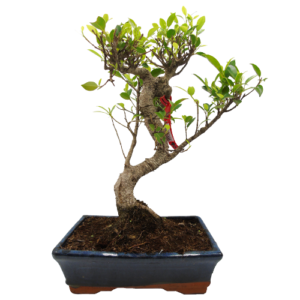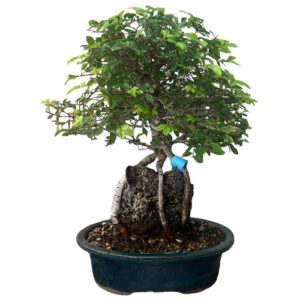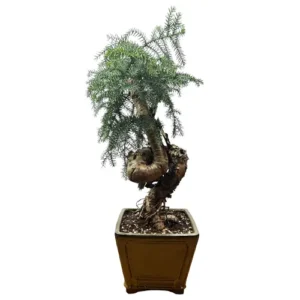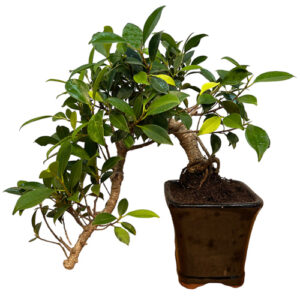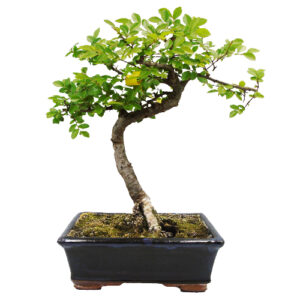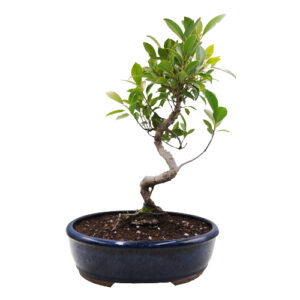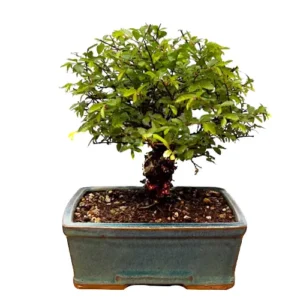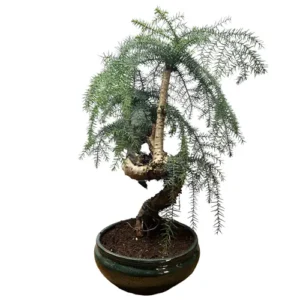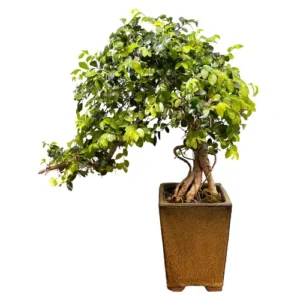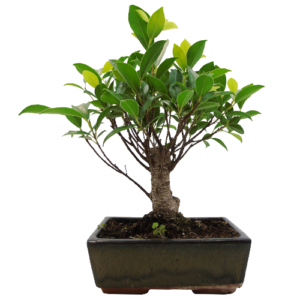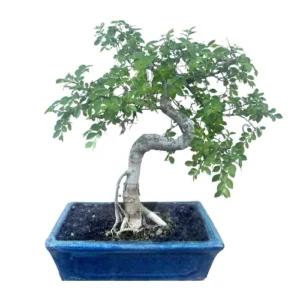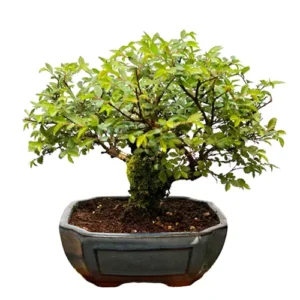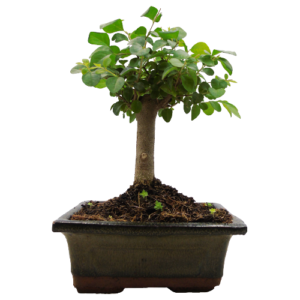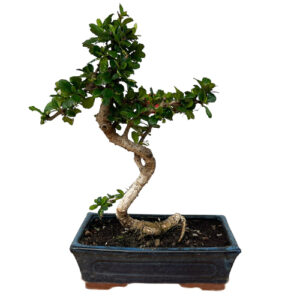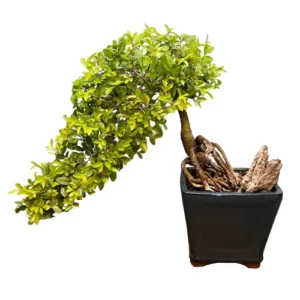Albizia
Silk Tree Bonsai
Native to Asia and commonly grown in North America. Also known as ‘mimosa’ these species get their title from their silky vibrant pink flowers. This fast-growing deciduous makes an unconventional bonsai with large leaves and a short life span.
Silk Tree Bonsai Care Tips
Placement
Albizia are tropical plants that will not tolerate frost and any rain will leave its flowers a gooey mess. When cultivating in the UK, its advised that Silk Tree Bonsai are grown indoors in a sunny spot that keeps it protected from wind. This species’ leaves will yellow when temperatures drop below 15 degrees C.
Watering
The soil of the Silk Tree should be allowed to dry before it is watered substantially. Overwattering will waterlog the soil. Albizia can handle short periods of drought allowing the soil to be dried between waterings.
Feeding & Fertilising
Feed your Silk Tree Bonsai across the growing season. Once a month with solid organic feed or weekly with liquid feed. In Winter, fertilise only occasionally.
Pruning & Wiring
Pruning your bonsai is important not only to create or maintain an aesthetic style but to also ensure optimal health. Prune your Silk Tree bonsai after the tree has flowered. Be sure to train the silk tree with a wide canopy in its natural form. The size of leaves are not possible to reduce in terms of their size, making this likely a medium to large size bonsai.
Silk Tree are a challenge to wire thanks to their soft bark and brittle branches. Its rapid rate of growth means these wires need constant vigilance to make sure the bark isn’t being damaged and can be removed in time. We recommend using wires with a thickness that matches the thickness of the branch: if the wire you choose is too thick you will damage the bark. If it is too thin, it won’t be effective.
Repotting
Repotting your tree is an important way to provide a fresh and suitable soil mix and ensure appropriate root health. Every two to three years when the roots have filled the pot, repot your Silk Tree bonsai in the Spring. This species is responsive to root pruning.
Trees that are ready for repotting will require root pruning, a suitable new pot and appropriate soil mix.
When repotting, do not cut back the root mass by a large amount, and choose a well-draining soil mix that has a neutral or slightly higher PH value of 5-6 but not over 7. We tend to use a mixture of different speciality bonsai soils on our trees. Every species is different so please contact us for free soil-mix advice or to take advantage of our repotting service.
Bonsai make for a one-of-a-kind indoor plant offering elegance, nature and art all in one minute form. Across an array of exquisite and erudite species, they all demand their own specific care and cultivation needs in order for their beauty to flourish. We have an extensive library of care guides for indoor bonsai trees so you can make an informed and considered choice. It’s not about selecting the perfect bonsai, it’s about selecting the perfect bonsai for you.
Silk Tree Bonsai - Typical Queries
How to propagate Silk Tree bonsai?
Silk Bonsai tree can be propagated with seeds, root cuttings or air-layering. The most popular and used method for propagation is by seed.
Do Silk Tree bonsai get pests and diseases?
Silk Tree bonsai can be affected by pests and diseases. Intruders for this plant include scale, mites, aphids and webworms. Specific insecticides including insecticidal soap can be used to treat the infestation. Keep a keen eye out for caterpillars, they can quite easily eat their way through the entire foliage.
Can you keep a Silk Tree bonsai outdoors?
You can absolutely keep a Silk Tree bonsai outdoors if in its appropriate climate. This is a species that grows best between temperatures of 20-30 degrees C. For a temperate climate this is clearly not appropriate.

